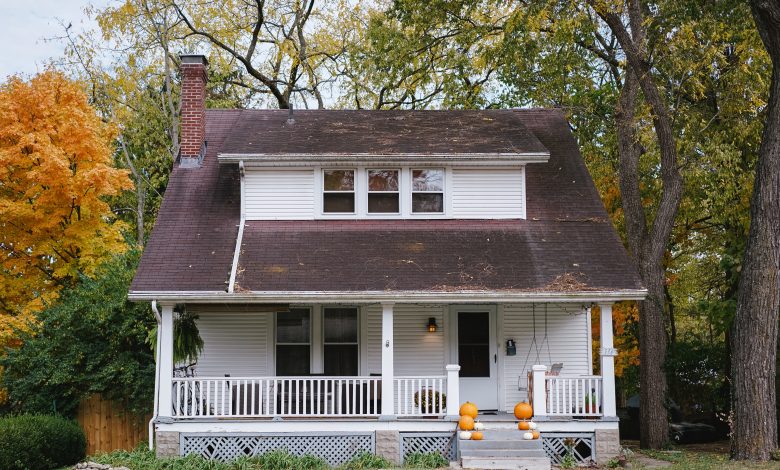How to Budget to Cover Your Mortgage Payment

With the recent housing market recession looming and no way out of it just yet, many people wonder about their mortgage payments. Of course, most people look at the house and ask themselves if they can afford it. Instead, a better question is if you can afford to borrow the money you need for it.
What Is a Mortgage?
Before you start worrying about your budget, you need to know what a mortgage is. Many people think they know. A mortgage is a loan that is used by someone to purchase real property to raise the funds necessary to buy real estate.
In a sense, your lender gives you the money you need to buy the house you want. You promise to pay back the money you borrowed plus interest. This happens over a period of time, usually 20 to 30 years.
This type of loan is a secured loan because the house is the collateral. If you default on the mortgage loan, the lender can sell the home from you to recoup its losses. Generally, mortgage payments are made monthly and have four components, including taxes, interest, insurance, and principal.
A Deeper Definition
Before you get a mortgage, you have to agree to the lender’s conditions and terms. They specify how long you have to pay back the loan, which is often decades. You also find out how much money you pay each year and how much money down you pay at signing. The down payment is usually a percentage of your home’s cost.
The terms and conditions also show you how fast interest accrues. You may have an interest rate that is fixed, which means that the amount stays the same for the life of the loan. An adjustable-rate interest is also available, where it can lower or raise depending on the market. You can also find hybrid versions, such as the 7/1 ARM (adjustable-rate mortgage), which accrues interest at the fixed rate for the first seven years of its life. After that, the lender can choose to adjust the interest rate.
Often, you are expected to make payments each month on your mortgage, though you can find other terms, such as paying every other month or quarterly (every three months). Generally, your payment goes toward the full amount you borrowed, which is the principal and interest; the interest is tax-deductible. When you fully pay off the mortgage, it’s called amortization.
A mortgage is a secured loan, so it’s backed by the house as the asset. If you default, the lender can take back the house, called a foreclosure. Generally, lenders want borrowers to take insurance out on the home, such as homeowner’s insurance. This covers any damages to the property. Another option is mortgage insurance, which is going to protect the lender if you default.
There are a variety of mortgage options available. These include:
- Balloon Mortgage: With the balloon mortgage, your monthly payments don’t amortize the loan toward the end of its period. The payments start off lower, but they balloon to a larger amount by the end of the terms. This works well for people who plan to have a higher income toward the end of their borrowing period. It also works for people who plan to sell the home before the loan ends, though you may have to sell the property or refinance your mortgage.
- Second Mortgage: Sometimes called a home equity loan, this allows you to take another loan out on the house to get to the home’s collateral or equity.
- Government-Backed Mortgage: Some citizens qualify for a U.S. government-issued mortgage. This can include the USDA (U.S. Department of Agriculture) loan. It is given to a rural property owner who doesn’t have appropriate housing. There’s also the Housing Administration Loan from the Federal government, which offers help to low-income citizens. People who served in the armed forces may also qualify for special options.

How to Budget for Your Mortgage
Now that you have a basic understanding of a mortgage, you might be trying to find the right one. With so many options, it can be tough. Plus, you may not know if you can afford the house that you want to buy.
For the most part, you can probably afford a loan on a property that costs between two and two-and-a-half times your gross income. With this formula, if you earn $100,000 a year, you can afford mortgages between $200,000 and $250,000. However, this is just a guideline to follow. It might be better to use a mortgage calculator or talk to your lender to estimate your monthly mortgage payment.
Before you start looking at houses, it is a good idea to know how much of a mortgage you can afford. This can help you decide on the right property. Talk to potential lenders and find out what they think you can afford and how the lender came to that estimation. Also, you have to evaluate your current finances, as well as your priorities and goals.
How a Lender Decides
Many factors go into the lender’s decision for affordability. Generally, it comes down to income, assets, liabilities, and debt. You may believe that your mortgage application is judged by someone who goes by their gut instead of objectivity, but the process is primarily based on a formula. Even if the person who approves or denies your loan has a bad day, they still go by these four criteria: gross income, front-end ratio, back-end ratio, and credit score.
Lenders need to know how much money you earn, what demands are already placed on that income, and the potential for those numbers to change in the future. In short, they look at what could jeopardize their ability to get their money back. Your credit score and history determine interest rates on the financing, which is decided on down payments, monthly expenses, and income.
Every mortgage lender has its own criteria to determine affordability, but it depends primarily on these factors:
Gross Income
This is the amount of money you make before your income taxes. It includes your salary, any bonuses, Social Security benefits, alimony, disability, child support, and more. It can help determine your front-end ratio.
Front-End Ratio
The front-end ratio is the percentage of your gross income (each year) that is dedicated to paying the mortgage each month. Mortgage payments consist of four components, including interest, principal, insurance, and taxes. In general, all of these components shouldn’t exceed 28 percent of the gross income. Still, many lenders let their borrowers go over 30 percent and might even go above 40 percent.
Back-End Ratio
Sometimes called the DTI (Debt-to-Income) ratio, this calculates how much of your gross income is needed to cover debts. This can include child support, credit card payments, and other loans (student, auto, etc.) For example, if you pay about $2,000 a month in expenses but only make $4,000 a month, this ratio is at 50 percent because half of the monthly income has to go toward debt.
The bad news is that such a high debt-to-income ratio isn’t going to allow you to get your dream home. Most lenders don’t want your DTI to exceed 36 percent of the gross income. You can calculate your maximum debt based on the DTI ratio by multiplying your income by 0.36 and then dividing that number by 12. Therefore, if you make $100,000 a year, you shouldn’t have monthly debt expenses exceeding $3,000. Of course, a lower DTI ratio is always better.
Credit Scores
Affordability is just one part of the mortgage payment and budget. The lender is also going to look at how much of a risk you are. Lenders have developed a way to tell how risky you are to them. It can vary, but it often focuses on your credit score. If you have a lower score, you’re probably going to pay higher interest rates, also called an APR (annual percentage rate).
The good news is that, if you’re planning to buy a house in the future, you can start improving your credit score now. Pay close attention to your credit reports and make sure to get them once a year from all three credit bureaus. If you notice anything incorrect, make sure you try to resolve and remove them from the report. Otherwise, you could miss out on your dream home because of a mistake on someone else’s part.

Calculating Your Down Payment
A down payment is the amount you can afford to pay out of your pocket using liquid assets or cash. Most lenders require you to have 20 percent of the purchase price of the home. If you want to avoid having to buy private mortgage insurance, you have to have 20 percent of the purchase price. Still, some lenders might loan you the money if you don’t have the full down payment. Of course, the more money you can put down, the less you are going to need in financing, and you are also going to look better to the lender.
For example, if you want a home that costs $100,000 and can afford 10 percent down, you have to pay a down payment of $10,000. Therefore, you need a loan for $90,000.
Lenders need to know how much they have to cover, but they also need to know how long the mortgage is necessary. Short-term mortgages have higher monthly payments but are often less expensive for the duration.
Personal Budget Restrictions
There is one more factor to consider here. Most lenders focus on your gross pay when determining your down payment and all the rest. You may factor that in too, but you’re not thinking about other expenses, such as health insurance, FICA deductions, taxes, and all the rest. Therefore, you might want to go by your net income (what you bring home) instead of the gross income.
When it comes to deciding how much you can afford, it comes down to your gross pay and your budget. It is important to understand how lenders determine mortgage amounts and why you may want to consider going by net instead of gross pay.



